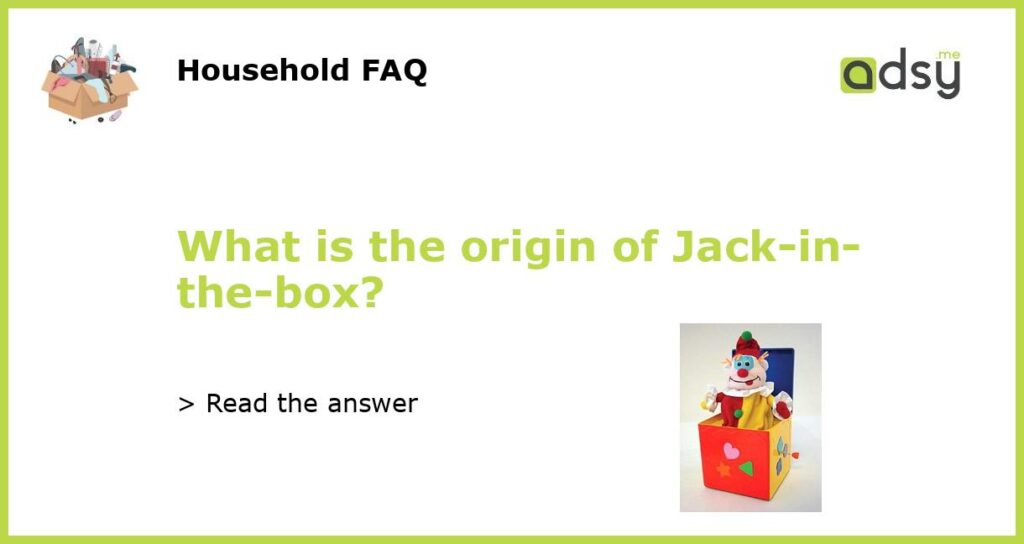The History of Jack-in-the-box: From Ancient Times to Modern Culture
Jack-in-the-box is a toy that has been entertaining children for generations. But where did it come from? Let’s explore the history of this classic plaything.
Ancient Origins: From Greek Mythology to Medieval Europe
The idea of a surprise toy popping out of a box dates back to ancient times. In Greek mythology, the goddess Pandora opened a box and released all the evils of the world. Later, during medieval times, jesters and minstrels used similar mechanisms to surprise and entertain crowds.
The First Jack-in-the-box: 16th Century Germany
The first known appearance of a jack-in-the-box toy was in 16th century Germany. These early versions were called “Kasperl” or “Kaspar” after a popular clown from German folk tales. They were made of wood and cloth and featured a head that would pop up when a crank was turned.
Jack-in-the-box Goes Mainstream: 19th Century England and America
In the 19th century, jack-in-the-box toys became popular in England and America. They were mass-produced and sold in toy shops and catalogs. Some versions even played music when the crank was turned. Jack-in-the-boxes were often given as gifts and were a common sight at children’s birthday parties.
Jack-in-the-box in Modern Culture: From Advertising to Horror Movies
Today, jack-in-the-boxes are still popular toys, but they have also become a cultural icon. They have been featured in advertising campaigns, TV shows, and movies. In horror films, they are often used as a creepy prop that symbolizes childhood innocence corrupted. Whether you love them or find them creepy, there’s no denying the lasting impact of the jack-in-the-box toy.






